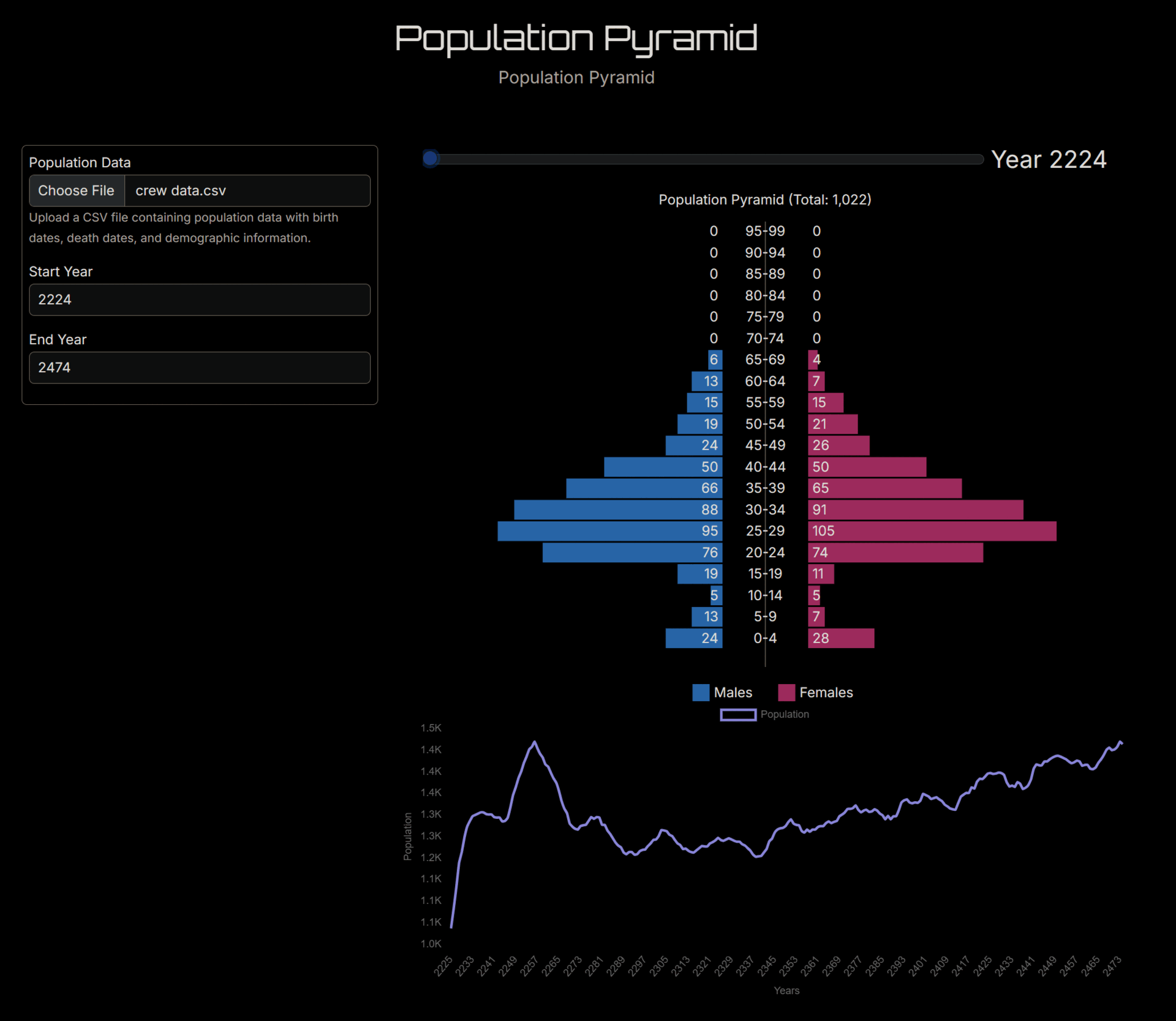Project Hyperion is a carefully considered framework for distilling humanity into a portable unit that can be sent to another star system.
Classification: R3iii
Designed for the Project Hyperion design competition in a collaboration between Orbital Design and Nexus Aurora, Neo-Genesis Seed is a carefully considered framework for distilling humanity into a portable unit that can be sent to another star system. While arriving safely at the destination with a high degree of certainty is the goal, the hallmark of Neo-Genesis Seed is to do so while retaining and promoting the best of humanity, including the best of how humanity can expect to live while in space, completely separated from Earth. Most of the people who will occupy this vessel will live their entire lives onboard and they deserve a life of dignity and prosperity. Neo-Genesis Seed is not a vehicle, and the voyage is not a mission; it is a home, a cradle, an artifact that will facilitate the genesis of a new branch of humanity and will be referenced in this new civilization’s origin story. If this interstellar endeavor is worth doing, it’s most certainly worth doing well.
The competition was open to the public for the Phase 1 submissions. Based on our Phase 1 submission, our team was invited to submit for Phase 2, which consisted of a design narrative booklet and a poster. The poster (shown to the left) can be viewed by clicking on the image, and the full design narrative booklet can be viewed here.
I’d like to thank the entire project team for their contributions and expertise:
Elliott Orion Ruzicka, Architect
James Boullion, Software Engineer
Sam Ross, Engineer
Moa Råhlander, Anthropologist
Thomas Bjelkeman-Pettersson, Food Production Systems Technician
Eden Buch Kornreich, Engineering Student
Sean Wessels, Architect
Anna Dovliatidou, Architect
At the heart of the proposal is the creation of an Earth-like environment within the ship. The vessel itself is designed as a rotating ellipsoid habitat with a radius of 1,000 meters and a length of 2,500 meters, large enough to provide a stable and regenerative ecosystem. The habitat simulates natural conditions with controlled gravity (1G at the outer edge), dynamic sunlight, wind circulation, and varied terrain to support biodiversity.
The interior is structured as an organic environment rather than an artificial enclosure, ensuring that natural cycles—such as air and water flow, soil microbiomes, and plant-animal interactions—can sustain life with minimal artificial intervention. A robust permaculture-based agricultural system integrates food production into the larger ecosystem, allowing for both human nutrition and the maintenance of ecological diversity. The goal is not mere efficiency but resilient overabundance, ensuring that natural systems can adapt and flourish over time.
A successful interstellar journey is not just an engineering challenge but a social one. The governance structure of Neo-Genesis Seed is designed to balance stability, adaptability, and public trust over a multi-century voyage. The governance system is structured as a council model, integrating representatives from occupational and administrative sectors to ensure decision-making remains decentralized yet cooperative.
The approach rejects reliance on high-tech, fragile systems that require advanced industrial infrastructure. Instead, it prioritizes mission-critical transitory technologies (such as artificial sunlight and propulsion systems, which are needed only during the voyage) and sustain-able, low-complexity technologies that the settlers can maintain indefinitely. This philosophy applies to everything from agriculture (favoring traditional farming over automated hydroponics) to manufacturing (favoring tools and processes that require minimal technological dependencies).
Engineering solutions focus on passive, failure-resistant designs. Thermal regulation is managed via radiative cooling, humidity control uses passive condensation grids, and water is cycled using gravity-assisted hydrology. These systems minimize the need for complex mechanical components that could degrade over centuries.
Key to societal stability is addressing potential risks such as knowledge loss, power consolidation, and unhealthy population dynamics. Without an external support network, maintaining critical knowledge—both technical and cultural—is a paramount challenge. This is addressed through a combination of tacit knowledge transmission (apprenticeships, multi-specialization roles) and codified knowledge storage (durable microfiche and etched-glass archives).
Population dynamics are carefully managed, neither allowing unchecked growth nor risking long-term decline. A target growth trajectory from 1,000 to 1,500 individuals over 250 years balances genetic diversity, workforce sustainability, and expansion potential upon planetary arrival. Crucially, this is achieved without authoritarian reproductive controls; in-stead, cultural and social incentives encourage balanced demographics. Unlike Earth-based civilizations that rely on vast supply chains, Neo-Genesis Seed must engineer for absolute self-sufficiency. This means selectively integrating technology that can be maintained, repaired, and reproduced by a small, closed society.
A generational ship is not just a machine—it is a civilization in transit. This means addressing the full spectrum of human existence, including education, work, governance, and death.
Education is foundational, with a structured yet adaptable model ensuring that all citizens receive training in scientific literacy, ethics, and practical skills. A cultural emphasis on learning fosters long-term knowledge retention and discourages intellectual stagnation. Work is structured around multi-specialization, ensuring that no critical skill is ever possessed by too few individuals.
Even death is an integrated part of the ecosystem. Bodies are not waste but resources for learning and renewal. The cultural norm favors donating remains for medical education before returning nutrients to the habitat through alkaline hydrolysis, a process that recycles organic matter without waste. Ritual and remembrance practices ensure that death remains a respected and meaningful aspect of life.
Neo-Genesis Seed is not merely a spacecraft—it is a society designed to endure the most extreme test of human resilience: multi-generational interstellar travel. By prioritizing ecosystem integrity, adaptable governance, and sustainable technology, this proposal outlines a pathway to not only surviving the journey but arriving as a civilization fully prepared to thrive on a new world.
The success of such a venture relies not just on technical ingenuity, but on designing for long-term cultural and ecological stability. Through a combination of robust environmental design, resilient social structures, and pragmatic technological choices, Neo-Genesis Seed presents a compelling vision for humanity’s expansion beyond our home star.
This is not just a ship—it is a world in motion, carrying a seed of humanity into space.


























